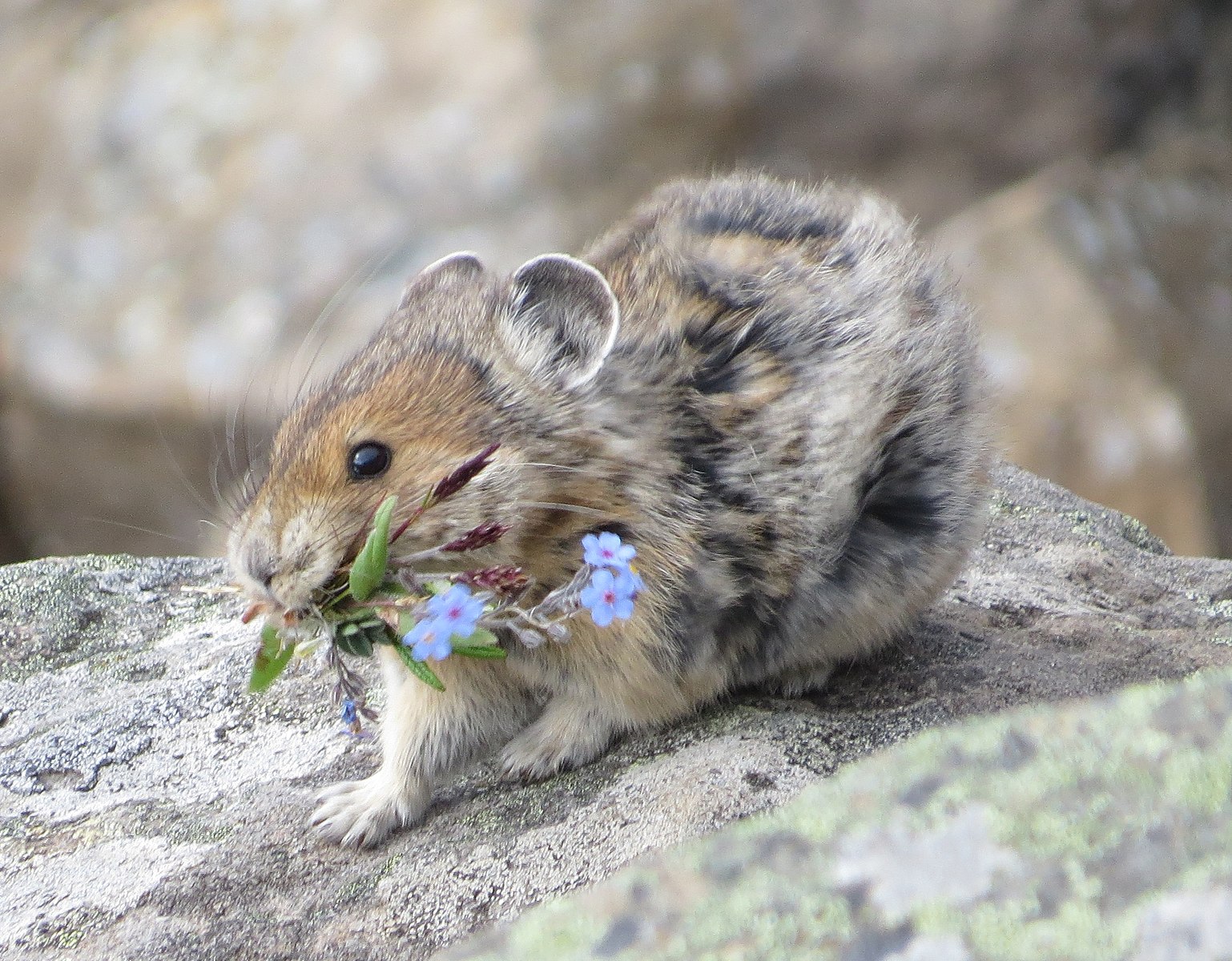5: American Pika
Hello friends,
I write to you from Arapahoe, Ute, and Cheyenne land. I am interested in learning about the different animals that live in the place where I was born. I want to mention that biological classification as taught by western science has its roots in racism, sexism, and transphobia – here’s a good explainer about why.
Watch this to around :50 to hear the noise that made my dog leap out of his bed and run to my laptop. But it’s not dinner for dogs – it’s the American pika (Ochotona princeps)! When we hike above treeline, we often at least hear – and sometimes see – a few chirpy little pikas. They are the smallest member of the lagomorph group, which is, in descending size order, hares, rabbits, and pikas. Pikas are only found in Central Asia and western North America, and it seems likely that they crossed into the latter sometime during the Pleistocene, though as with many small creatures who leave behind delicate and easily destroyed remains, their fossil record is spotty.
Pikas have brown and black fur, which is perfect for blending in with rocks dotted with moss and strewn by Pleistocene glaciers across their tundra landscape. Pikas live almost entirely above treeline, in the alpine world, although there are a few populations who prefer even more dramatic homes – some live in the ice tubes in California's Lava Beds National Monument.
Here’s another fascinating thing: the name pika is originally from Tunguse, a language I did not even know existed until this morning. It may be the only English word from that language? Admittedly I am using this Wikipedia list to determine that, which is doubtless incomplete, but it doesn’t even include a page on Tunguse (I’ll be rectifying that this afternoon). Tunguse is… well there’s a lot to learn about it, starting here, but basically it is from Central Asia/Siberia. The scientific name for the pika includes Ochotona, from the Mongolian word for pika, ogdoi.
Pikas do not hibernate – they forage for grasses, moving them around during the day to ensure they dry, and then storing them in their dens to save for later.

Tomorrow we’re moving on to an animal that is less traditionally cute, but will doubtless be just as interesting.